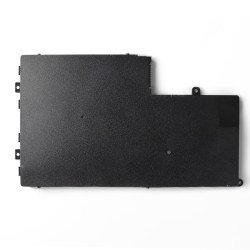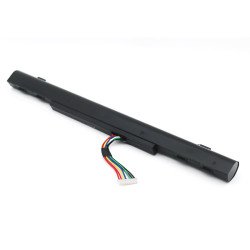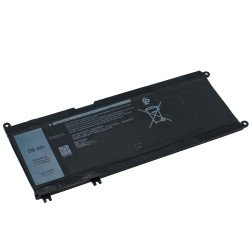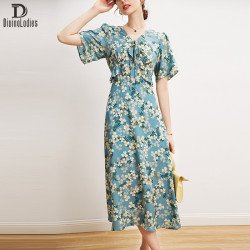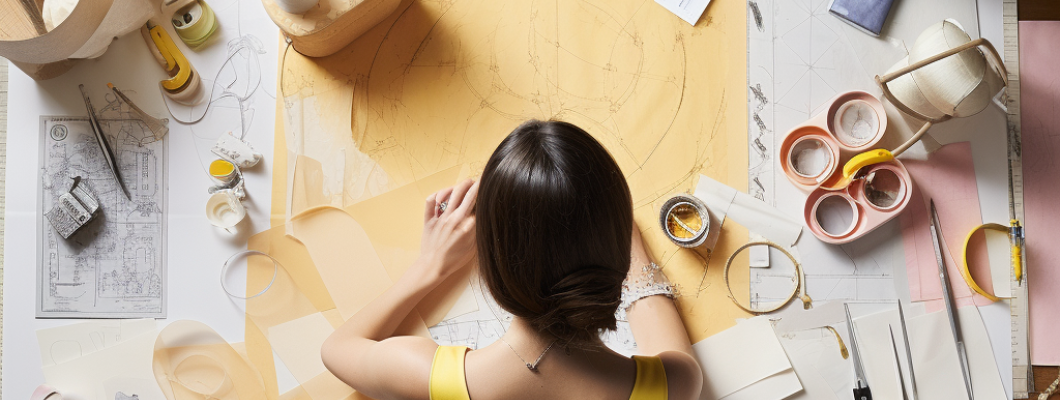
In the intricate world of fashion design, attention to detail is not just a luxury—it's a necessity. And nowhere is this more evident than in the art and science of pattern making. For those unfamiliar, a pattern serves as the blueprint for a garment, dictating its shape, dimensions, and construction. Neglect the pattern, and you jeopardize the entire design. But master the pattern, and you've unlocked the secret to creating fashion that's both stunning and functional.
Pattern making is both an age-old craft and a modern discipline, constantly evolving with the advent of new technologies. This guide aims to navigate you through the complexities of apparel pattern making, whether you're an aspiring fashion designer or a seasoned pro looking to refine your skills. From understanding different pattern types to mastering drafting and draping techniques, we'll delve into every aspect in meticulous detail.
The Importance of Pattern Making in Fashion Design
In the ever-changing landscape of fashion, one constant remains: the pattern. For anyone serious about fashion design, pattern making is not just a step in the process—it's an integral component that shapes the garment from concept to creation. Why does this seemingly technical task hold such significance? Let's unpack the reasons.
- Precision and Consistency: A well-executed pattern ensures that every garment produced is consistent in size, shape, and style. In an industry where precision is key, even a small error can dramatically affect the final product.
- Cost-Effectiveness: Efficient pattern making can significantly reduce material waste. In an age increasingly concerned with sustainability, effective use of fabrics not only saves money but also minimizes environmental impact.
- Customization: Patterns allow designers to adjust details easily, offering a level of customization that's crucial in meeting individual preferences and requirements.
- Quality Control: A meticulous pattern serves as a quality checkpoint. It allows designers, tailors, and manufacturers to spot potential issues before they escalate into costly mistakes.
- Innovation: Mastering the basics of pattern making opens the door to innovation. A deep understanding of patterns enables designers to experiment and push the boundaries of what's possible in garment construction.
Understanding the significance of pattern making offers not just technical prowess but also a strategic advantage. When patterns are developed with expertise, experience, and a keen eye for detail, they lay the foundation for garments that are not only beautiful but also well-constructed and sustainable.
By investing time and effort into mastering pattern making, you're not merely following a step in the design process; you're committing to excellence and integrity in your craft.
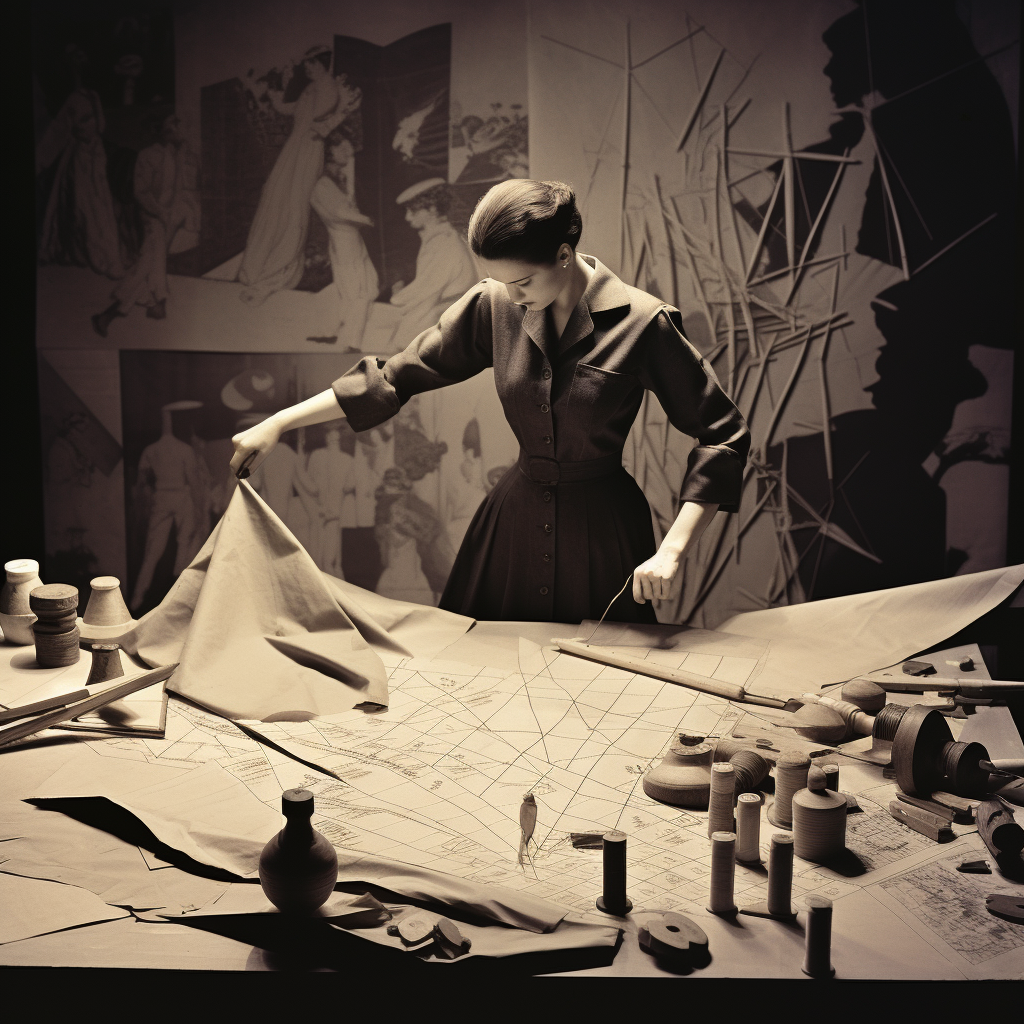
Different Types of Patterns and Their Uses
Just as there are myriad styles and fabrics in fashion, so too are there different types of patterns, each serving a unique purpose. Recognizing and understanding these varieties is essential for any fashion designer. Let's explore some of the most common types of patterns you'll encounter:
- Basic (or Block) Patterns: These are the foundation upon which all other designs are built. Basic patterns are typically devoid of any design features like pleats or gathers, serving as a blank canvas for designers.
- Dart Manipulation Patterns: As the name implies, these patterns manipulate the basic block's darts to create style features. Techniques like slashing and spreading or pivoting are used to create new shapes and styles.
- Style (or Fashion) Patterns: Derived from basic patterns, style patterns incorporate specific design elements such as collars, pockets, and sleeves. They are the templates for the final garments and often include seam allowances.
- Production Patterns: These are the final versions of style patterns, inclusive of all adjustments needed for manufacturing. They contain markings for notches, drill holes, and other necessary manufacturing guidelines.
- Flat Patterns: Created by a technique that involves taking a basic pattern and modifying it on a flat surface. Flat patterns are useful for simple designs and are an industry standard for their ease of use.
- Draped Patterns: These are created by pinning and manipulating fabric directly onto a mannequin. Draping is commonly used for more complex designs that require a 3D perspective.
- Modular Patterns: In this approach, garments are broken down into smaller modules or pieces. Each module is designed individually, making it easier to adjust sizes and styles.
Each type of pattern comes with its own set of considerations, from ease of use to adaptability to different styles. Understanding the purposes and capabilities of these different types of patterns gives you the tools to tackle any design challenge effectively. In an industry where innovation and precision go hand in hand, knowledge of pattern types is indispensable.
Essential Tools for Pattern Making
The art of pattern making relies not only on skill and creativity but also on the tools employed to bring those designs to life. As with any craft, having the right instruments can significantly enhance both the process and the final product. Below are some essential tools that any aspiring or experienced pattern maker should have in their toolkit:
- Measuring Tape: This flexible tape is indispensable for taking accurate measurements, a cornerstone in creating precise patterns.
- Drafting Paper: This is where your designs will first take form. Opt for high-quality, gridded paper for ease of use.
- Drafting Curve Set: These sets include curves of varying shapes, essential for drawing clean, accurate lines for necklines, armholes, and more.
- Rulers: A straight ruler is a must, but also consider adding a French curve and a hip curve ruler to your collection for more complex shapes.
- Pencils and Erasers: Choose pencils that offer a good grip and clean lines, and keep a quality eraser on hand for inevitable revisions.
- Pattern Notcher: This tool is used to make small cuts in the edge of patterns to mark where pieces should align during sewing.
- Awl: A pointed tool used for marking points on the pattern, particularly useful when you need to indicate where darts or pleats will go.
- Tracing Wheel: This tool is vital for transferring pattern markings onto fabric or another layer of paper.
- Scissors: You'll need at least two types: paper scissors for cutting pattern paper and fabric scissors for cutting the material itself.
- Pattern Weights: These help hold your pattern in place while tracing or cutting, particularly useful when dealing with slippery fabrics.
- Cutting Mat: Protect your workspace with a self-healing cutting mat, which will also help extend the life of your cutting tools.
- Computer and Software: As pattern making goes digital, software like Adobe Illustrator, CLO3D, or Optitex can be invaluable for creating and adjusting patterns.
Equipping yourself with the right tools can be a significant investment, but the return is immeasurable in terms of the quality and precision you can achieve. The goal here is not just to facilitate the pattern making process but to perfect it. In a field as competitive and detail-oriented as fashion design, settling for anything less than the best tools can compromise the excellence and integrity of your work.
Basic Techniques in Apparel Pattern Making
Mastering the art of pattern making involves becoming proficient in a variety of techniques, each with its own set of rules, advantages, and applications. Let's delve into the three foundational methods in apparel pattern making: Drafting, Draping, and Flat Pattern Technique.
Drafting
What Is It?: Drafting involves creating a pattern from scratch, using a set of measurements to draw the shape of the garment directly onto paper.
When to Use: Drafting is particularly useful when you need a very custom fit, such as for tailored suits or custom evening gowns.
Advantages: Highly precise, allows for extreme customization.
Steps:
- Take comprehensive measurements of the body or dress form.
- Plot these measurements onto pattern paper.
- Connect the points to create a basic outline, adding seam allowances.
- Refine the shape through subsequent drafts until it meets your design specifications.
Draping
What Is It?: Draping involves manipulating a piece of fabric directly onto a mannequin or dress form to create a pattern.
When to Use: This method is ideal for garments that require a more fluid, organic shape or for when you’re working with drapey, stretchy, or otherwise difficult fabrics.
Advantages: Allows for real-time visualization, excellent for complex designs.
Steps:
- Pin a muslin fabric onto a dress form.
- Manipulate the fabric to your desired shape, pinning or marking as you go.
- Remove the muslin and lay it flat to create your pattern piece, adding seam allowances and markings.
Flat Pattern Technique
What Is It?: This is a modification method where you start with a basic pattern (often called a "block") and alter it to create new styles.
When to Use: This is the go-to method for most fashion designers as it’s efficient for making multiple styles based on a single, well-fitting pattern.
Advantages: Efficient, excellent for a range of simple to moderately complex designs.
Steps:
- Start with a basic block pattern.
- Mark the desired design changes directly onto the pattern or on a tracing of it.
- Cut and spread (or slash and pivot) the pattern to create new design elements like pleats or gathers, making sure to maintain grainlines and key fit points.
- Each of these techniques has its place in the pattern maker’s skill set, and often, a combination of methods will be used on a single garment. Understanding when and how to employ these techniques gives you a robust toolkit for tackling any design challenge that comes your way.
Steps to Creating a Basic Pattern
The journey from a design idea to a tangible garment goes through the crucial phase of pattern making. Whether you're a novice exploring the realm of fashion design or a seasoned professional, the following steps offer a structured approach to creating a basic pattern.
Determine the Type of Garment: Understand the garment you're aiming to create. Is it a blouse, a skirt, or a pair of trousers? The type of garment informs the pattern making process you’ll follow.
- Choose the Appropriate Method: Based on your garment type and design complexity, decide whether drafting, draping, or flat pattern technique will be the most effective method.
- Gather Measurements: For drafting, it’s crucial to gather precise body measurements. If using a block for flat patterning, make sure the block measurements closely align with those of the intended wearer.
- Select Pattern Paper and Tools: Ready your drafting paper, pencils, measuring tape, rulers, and other essential tools. If you're draping, prepare your muslin fabric and pins.
- Plot Key Points: For drafting, plot key points based on measurements onto your pattern paper. If draping, these points will be pinned onto your fabric as you manipulate it on the dress form.
- Draw the Outline: Using a ruler and curves, connect the points to outline your pattern. For draping, this involves shaping the fabric around the form until it fits as desired.
- Mark Key Features: Mark darts, pleats, grainline, and other important features. This step is also crucial when modifying a block in flat patterning.
- Add Seam Allowance: Generally, a seam allowance of about 1/2 to 5/8 inch is added around the pattern edges, although this can vary based on the garment type.
- Cut and Test: Once the pattern is ready, it’s advisable to cut it out of a cheap fabric first to create a test garment (often called a muslin). Make adjustments based on this trial.
- Finalize the Pattern: After making any necessary adjustments, transfer these back to your original pattern. This final pattern is now ready for your chosen fabric and subsequent sewing.
Creating a basic pattern may seem daunting, but each step serves a crucial function. It's a series of building blocks that combine to bring your design vision to reality. And remember, practice not only makes perfect but also fuels innovation and mastery.
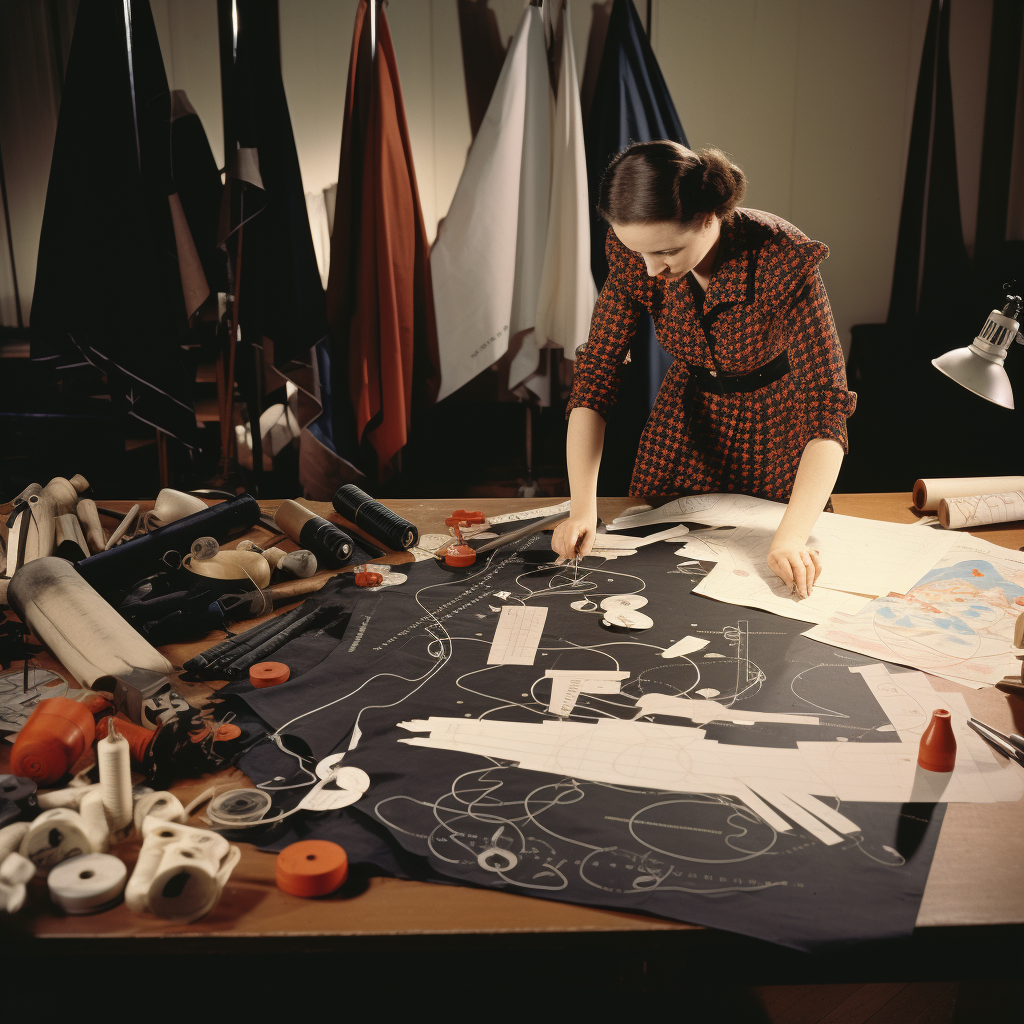
Tips for Mastering Apparel Pattern Making
Mastering pattern making is a journey that combines technical know-how with artistic flair. As you tread this path, some expert tips can prove invaluable in honing your skills and elevating your designs. Here are some tips that align with the best practices of the industry:
- Start Simple: Before diving into complex designs, begin with simple garments like a basic skirt or t-shirt. This will help you grasp foundational techniques without becoming overwhelmed.
- Pay Attention to Grainlines: The orientation of the grainline can significantly impact how the fabric hangs and stretches. Always mark the grainline clearly on your pattern.
- Master the Art of Measurement: Accurate measurements are the backbone of successful pattern making. Invest time in learning how to take precise measurements, and always double-check.
Keep Seam Allowances Consistent: Inconsistent seam allowances can lead to fitting issues. Choose a standard seam allowance and stick to it throughout a project.
- Understand Fabric Behavior: Different fabrics have different drape and stretch characteristics. Knowing how a fabric behaves helps you choose the right pattern making method.
- Practice Dart Manipulation: Darts add shape to a garment. Experiment with different dart placements and sizes to understand how they impact fit and design.
- Iterate and Test: Always create a muslin or test garment before cutting into your final fabric. This allows you to make adjustments without costly mistakes.
- Stay Organized: Keep your workspace and materials organized. Label patterns clearly, especially if you're working on multiple pieces simultaneously.
- Learn Digital Tools: While traditional methods are foundational, digital pattern making software can streamline the design process and offer new ways to visualize and adjust patterns.
- Seek Feedback and Continue Learning: Fashion is an evolving field, and continuous learning is essential. Seek feedback from peers and mentors, and stay updated with industry trends and technologies.
Mastering pattern making is not just about executing a single design flawlessly; it’s about preparing yourself for a fulfilling, long-term career in fashion. It's a skill set that rewards meticulousness, creativity, and a willingness to constantly evolve. As you refine your skills, you'll find that the quality and ingenuity of your designs will rise in tandem.
Common Challenges and Solutions in Apparel Pattern Making
Even the most experienced pattern makers encounter challenges. However, identifying these obstacles and knowing how to overcome them can make the difference between a successful garment and a costly mistake. Below are some of the common challenges faced in apparel pattern making and practical solutions for each:
Inaccurate Measurements
- Challenge: Incorrect body measurements can lead to ill-fitting garments.
- Solution: Double-check all measurements and consider using a fitting model or dress form that closely matches the intended wearer's dimensions.
Fabric Behavior
- Challenge: Fabrics with different stretch and drape can behave unpredictably.
- Solution: Conduct a 'drape test' to understand how the fabric hangs and stretches, adjusting your pattern accordingly.
Seam Allowances
- Challenge: Inconsistent seam allowances can lead to uneven seams and a poor fit.
- Solution: Use a seam gauge or a specialized sewing machine foot to maintain consistent seam allowances.
Dart and Pleat Placement
- Challenge: Incorrectly placed darts and pleats can distort the garment's shape.
- Solution: Before finalizing the pattern, pin darts and pleats on a test garment to verify their effectiveness and appearance.
Grainline Misalignment
- Challenge: Incorrect grainline alignment can affect the garment's hang and fit.
- Solution: Always mark the grainline on your pattern and double-check its alignment when laying out the pattern on fabric.
Pattern Complexity
- Challenge: Overly complicated patterns can be difficult to assemble and may result in errors.
- Solution: Start with a simpler version of your design, gradually adding complexity as you gain confidence.
Transferring Marks and Notches
- Challenge: Failing to transfer all pattern marks and notches onto the fabric can make assembly confusing.
- Solution: Use tracing paper and a tracing wheel, or tailor's chalk, to transfer all relevant markings.
Digital Errors
- Challenge: When using digital pattern making software, it’s easy to make a mistake in scaling or layering.
- Solution: Always cross-reference digital patterns with physical measurements, and print a test pattern if possible.
Scale and Proportions
- Challenge: A design that looks good in a sketch or on a computer screen may not translate well to a full-sized garment.
- Solution: Create a test garment in a cheap fabric to evaluate the design's proportions and overall appearance.
Keeping Up with Trends
- Challenge: Fashion is ever-evolving, and yesterday's techniques may not serve tomorrow's trends.
- Solution: Stay updated with industry developments, and be open to learning new techniques and technologies.
Understanding these challenges and their solutions can arm you with the foresight to avoid common pitfalls, saving both time and resources. Pattern making is an art form that rewards attention to detail, and understanding how to navigate these challenges is part and parcel of mastering this invaluable skill.
Frequently Asked Questions (FAQs)
What is Apparel Pattern Making?
Apparel pattern making is the process of creating the blueprints for a garment, which guides the cutting and assembling of fabric pieces.
Do I Need Specialized Software for Pattern Making?
While traditional methods using paper and pencils are effective, specialized software can streamline the process and offer additional features.
Is Drafting the Same as Draping?
No, drafting is a mathematical method using measurements to create a flat pattern, while draping involves pinning fabric on a dress form to create a pattern.
What is a Seam Allowance?
Seam allowance is the extra margin around the pattern edge, added to give room for sewing the pieces together.
How Important are Fabric Grainlines?
Grainlines are crucial for how the garment hangs and stretches. They should be carefully marked and aligned during pattern making.
What's a Muslin?
A muslin is a test garment made from cheap fabric, used to evaluate the fit and design of a pattern before cutting into the final fabric.
How Can I Improve My Pattern Making Skills?
Practice, learning from feedback, and staying updated with industry trends and technologies are key to improving pattern making skills.
Do I Need to Know Sewing for Pattern Making?
While not mandatory, understanding basic sewing techniques can be beneficial for better pattern making.
Can I Use a Standard Block for All Garments?
A standard block serves as a foundation but will likely require modifications based on specific designs and fitting requirements.
What is Dart Manipulation?
Dart manipulation involves moving and resizing darts to alter the garment's shape and fit without changing its overall dimensions.


